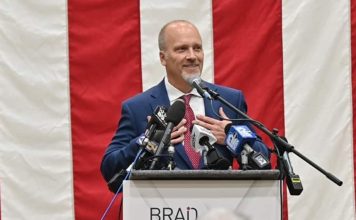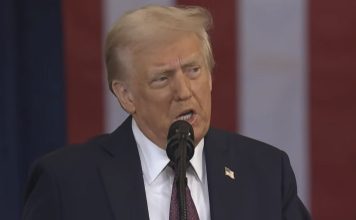(The Center Square) – A group of Northeast and mid-Atlantic states are inching toward a regional climate pact that’s aimed at reducing emissions and easing traffic congestion, but could ultimately increase prices at the gas pumps.
Modeled on the Regional Greenhouse Gas Initiative, which has reduced emissions from power plants, the Transportation and Climate Initiative would create a cap-and-invest program to drive down emissions from cars and trucks, which contribute to about 40% of regional greenhouse gas emissions scientists say contribute to a warmer planet.
The TCI collaborative is made up of 12 states – Connecticut, Delaware, Maine, Maryland, Massachusetts, New Hampshire, New Jersey, New York, Pennsylvania, Rhode Island, Vermont and Virginia – as well as the District of Columbia.
Final details are still being worked out, but states are expected to sign a memorandum committing to join the pact by the end of the month. The program would get underway in 2022.
TCI states say the cap and trade program could reduce regional emissions by as much as 24% by 2032.
Ultimately, the agreement will lead to a new wholesale tax on fossil fuel suppliers to pay for regional transportation projects. Suppliers who transport fuel across state lines would be required to pay a tax on excess carbon emissions based on caps that still must be set. Over time, the fuel levy would increase while the emission caps would be tightened.
Supporters of the plan, including environmental groups and transit advocates, say it will help the states meet dual goals of reducing emissions and air pollution and easing traffic congestion. The goal is make it more expensive to use fossil-fuel burning vehicles, which TCI proponents argue would decrease regional emissions in the long-term.
Money generated by the program would be available to states to use on transportation projects, such as expanding public transit to reduce reliance on personal vehicles.
Critics argue the pact will hurt the region’s economy by driving up energy costs for businesses and consumers with a minimal impact on regional emissions.
How many states will sign onto the deal remains unclear. Some governors have voiced concerns about the pact, even before the coronavirus outbreak.
New Hampshire Gov. Chris Sununu, a Republican, has said the Granite State won’t be joining the pact. Vermont Gov. Phil Scott, also a Republican, has vowed to veto any carbon tax.
“I hear from Vermonters across the state, like those traveling long distances for work out of necessity not choice, and others, like our seniors living on fixed incomes, who struggle to fill their gas tanks and heat their homes,” Scott said earlier this year. “I simply cannot support proposals that will make things more expensive for them.”
While the price tag for consumers is not yet known, fuel suppliers are expected to pass on the added cost to them at the pumps.
“To be 100% clear, and eliminate any confusion, these costs, and the costs necessary to comply with this program by regulated entities will be reflected in retail motor fuel prices that consumers pay,” the New England Convenience Store and Energy Marketers Association, wrote in recent comments opposing the regional pact.
Last year, TCI states released a study estimating the cap-and-trade program would add between 5 cents and 17 cents to the price of a gallon of gasoline, depending on the carbon reduction targets set by the coalition.
A recent study by the Center for State Policy Analysis at Tufts University estimated that gasoline and diesel prices could increase from as little at 3 cents to as much as 38 cents per gallon in 2022 depending on the state of the economy and whether the coalition pursues goals of 20%, 22% or 25% reductions in emissions by 2032.
Meanwhile, some TCI states have been reevaluating the climate modeling that backs up the plan with traffic congestion and travel dramatically reduced amid the coronavirus pandemic.
By Christian Wade | The Center Square
Go to Source
Reposted with permission











![WATCH: Elon Musk Town Hall Rally in Green Bay [FULL Video]](https://www.wisconsinrightnow.com/wp-content/uploads/2022/04/Elon_Musk_3018710552-356x220.jpg)



![The Wisconsin DOJ’s ‘Unlawful’ Lawman [WRN Voices] josh kaul](https://www.wisconsinrightnow.com/wp-content/uploads/2025/03/MixCollage-29-Mar-2025-08-48-PM-2468-356x220.jpg)







![Phil Gramm’s Letter to Wall Street Journal [Up Against the Wall]](https://www.wisconsinrightnow.com/wp-content/uploads/2025/03/gramm-356x220.png)










